We’ve covered the Galaxy S II and Galaxy S III in previous Flashback articles, but now it’s time for the original – the one that started it all. Well, ther was the I7500 Galaxy after which almost all of Samsung’s Android phones are named, but we mean the original S-series phone.
The Samsung Galaxy S (I9000 if you want to compare model numbers) was announced in March 2010. Yes, the S series are over a decade old now. The phone became available in June of that year and would reach a total of 10 million units sold by January 2011. 4 million of those were sold in North America (more on that later) and 2.5 million went to Europe.
The S-phone popularized Samsung’s Super AMOLED panel, though it was not the first to use them. That honor goes to the Wave, a Bada-powered phone. Samsung hoped that the Wave series would sell millions of units too, the company was used to juggling multiple OSes. But Androids explosive growth quickly put an end to Bada, Symbian, Windows Mobile and other lines.
Back to the screen – it was a 4.0” panel with 480 x 800 px resolution, using the PenTile arrangement (two sub-pixels per pixel, not three). It was arguably the most impressive screen we had seen until then.


The Samsung I9000 Galaxy S compared with the iPhone and the LG BL40 Chocolate
The panel was laminated to the Gorilla Glass protective layer, so the image almost appeared to float on the top of the glass – most phones back then had an air gap between the screen and glass (sometimes plastic). Also, the contrast of AMOLED made the image pop, it had a clear advantage over the LCDs of the day.

At 9.9 mm thick, the Galaxy S was marketed as the thinnest Android smartphone in the world, a title that would be claimed by its successor, the S II, the following year.
The phone was powered by the Hummingbird S5PC110 chipset, later renamed Exynos 3 Single 3110. This was the first-ever Exynos chip and it was co-developed with Intrinsity, a company that specialized in high performance CPU design (Intrinsity was snatched up by Apple in 2010, shortly after the phone was announced).

The chipset featured a single-core Cortex-A8 CPU running at 1.0GHz (up to 1.4GHz in some variants). It was paired with 512MB of RAM and 8GB storage (with a 16GB option). Also, microSD cards up to 32GB were supported.
This was important as the Galaxy S was one of the best multimedia devices of its day. It was the first Android to be certified for DivX HD viewing (remember the DivX video codec?). Of course, the AMOLED display made for an awesome experience with its high contrast and saturated colors.

The phone also had a 3.5mm headphone jack with a Wolfson WM8994 DAC and, as we noted in our review, the audio quality was excellent.
The Galaxy S launched with Android 2.1 Eclair, which was skinned with TouchWiz 3.0. That’s right, version 3.0. Samsung started the TouchWiz project several years prior in an attempt to unify the touch interfaces of its phones that ran Windows Mobile, Symbian and even featurephone OSes (including the Jet and others). Like we said, at the time Samsung preferred not to be tied down to a single operating system.




The TouchWiz 3.0 user interface comes preinstalled on top of the Android OS
Anyway, the phone was officially updated to 2.3 Gingerbread. It never got 4.0 and later Androids with the official explanation being “not enough RAM”. However, with millions of units sold, this was a popular target for custom ROMs. If you take a peek at the XDA forums you’ll see some surprisingly recent posts. It seems that the latest version that you can get running on the I9000 is 7.1 Nougat.
The phone was equipped with 5MP camera on the back, which was pretty bare-bones. There was no LED flash, never mind a hardware shutter key. The photos it produced weren’t the best either (noisy and underexposed). On the plus side, the phone did record 720p video at 30 fps, which was no small feat back then. For comparison, the Samsung i8910 Omnia HD only got up to 24fps.






Samsung I9000 Galaxy S camera samples
We promised more detail on the Galaxy S in the North American market and, oh boy, there’s a lot to cover. The I9000 served as a basis for all kinds of variations, it seems that every carrier wanted its own version of the phone. Some of these only switched up the supported 3G band bands to fit the carrier’s network.
Then there were the likes of i897 Captivate for AT&T and later the i927 Captivate Glide, which packed a slide-out QWERTY keyboard. Or the I997 Infuse 4G also for AT&T. Note: it’s a 3G phone, never mind the deceptive marketing. The same goes for the Galaxy S 4G T959 for T-Mobile (aka Vibrant). It was a weird period in time when carriers started calling HSPA+ “4G” (they did much the same with LTE-A and “5G”).

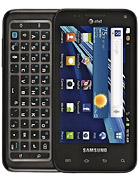
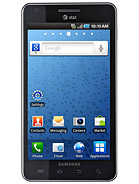
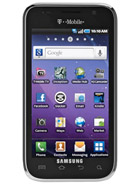
Samsung i897 Captivate • Samsung i927 Captivate Glide • Samsung I997 Infuse 4G • Galaxy S 4G T959
The Epic 4G for Sprint was also a 3G phone, though the CDMA kind of 3G this time (this version had a keyboard). Verizon and US Cellular received CDMA versions as well, e.g. the Fascinate and Mesmerize i500. Samsung did create some honest to goodness 4G (LTE) models in 2011, ones like the Droid Charge I510 and I405 Stratosphere for Verizon – the former out a keyboard, the latter with.
It’s not just LTE, the Droid Charge also borrowed the larger 4.3” Super AMOLED Plus display of the Galaxy S II (which had a full RGB stripe instead of a PenTile matrix). Also, the camera was upgraded to 8MP, though the phone kept the original Exynos chip so no 1080p video recording.
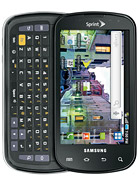
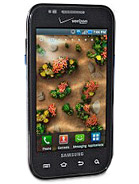
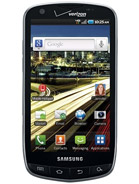
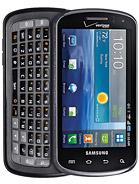
Samsung Epic 4G • Samsung Fascinate • Samsung Droid Charge I510 • Samsung I405 Stratosphere
We’ll quickly go over a few other notable variations of the Galaxy S. On one end of the spectrum was the I9003 Galaxy SL. The goal with this one was to create a low-cost version of the highly popular device. This led Samsung to switch the display to an SC-LCD panel and the chipset to a TI OMAP 3630. Also, RAM and storage capacities were reduced.
On another end was the I9001 Galaxy S Plus, a fancier version of the phone (though not as good as the Charge). This one kept the Super AMOLED display and got an upgraded chipset – a Snapdragon S2 with a 1.4 GHz Scorpion core and Adreno 205 graphics (replacing the PowerVR SGX540 GPU). Performance was a mixed bag (check out the benchmarks in our review) with Snapdragon’s CPU being much faster, while its GPU lagged significantly behind.
Earlier this week Samsung launched the Galaxy S21 series, the 12th generation of S-phones. They still use Super AMOLED displays and (some of them) are powered by Exynos chipsets, though both are much improved from what was back then. No more TouchWiz, though, that was supplanted by One UI (and for the better, many would say).












